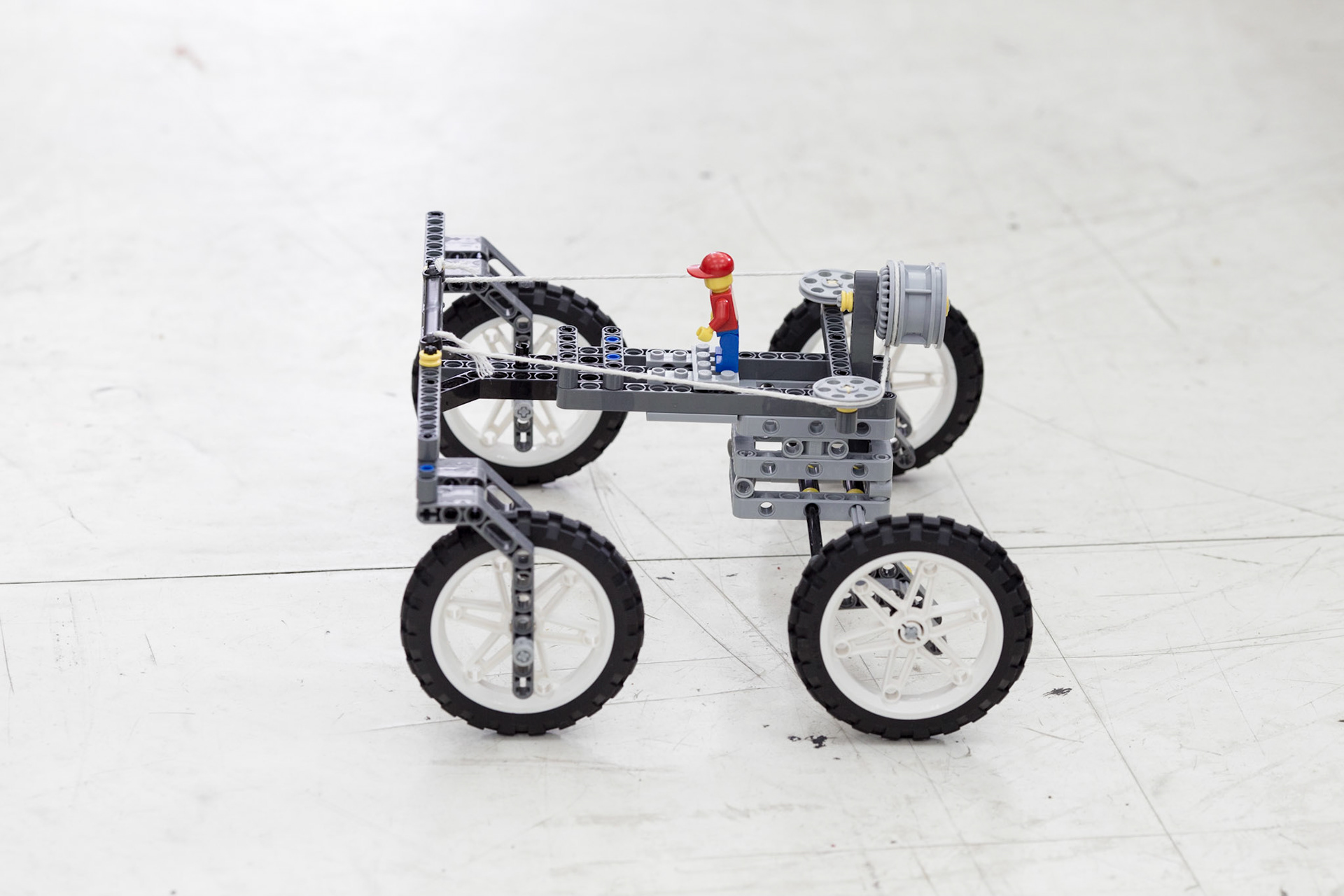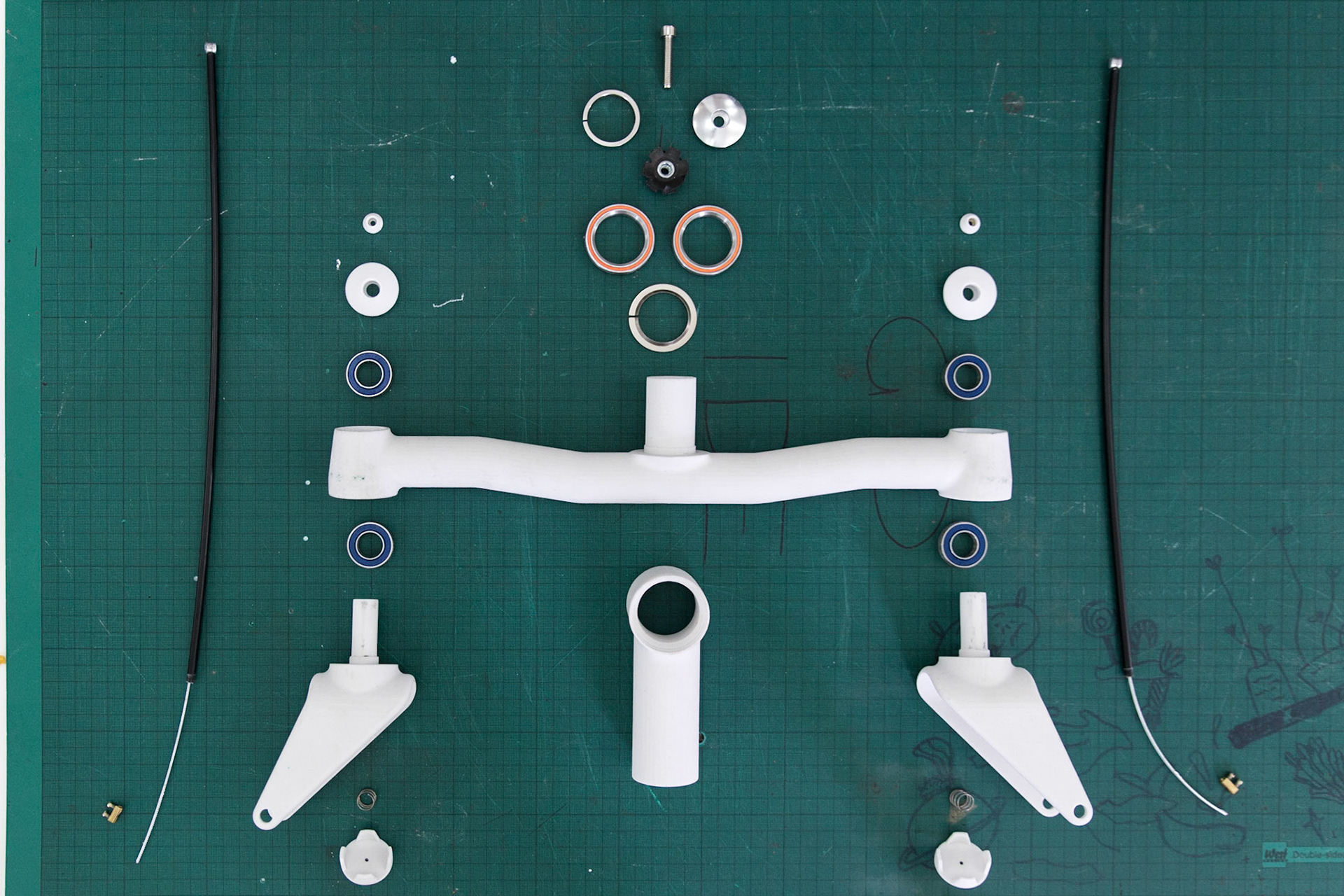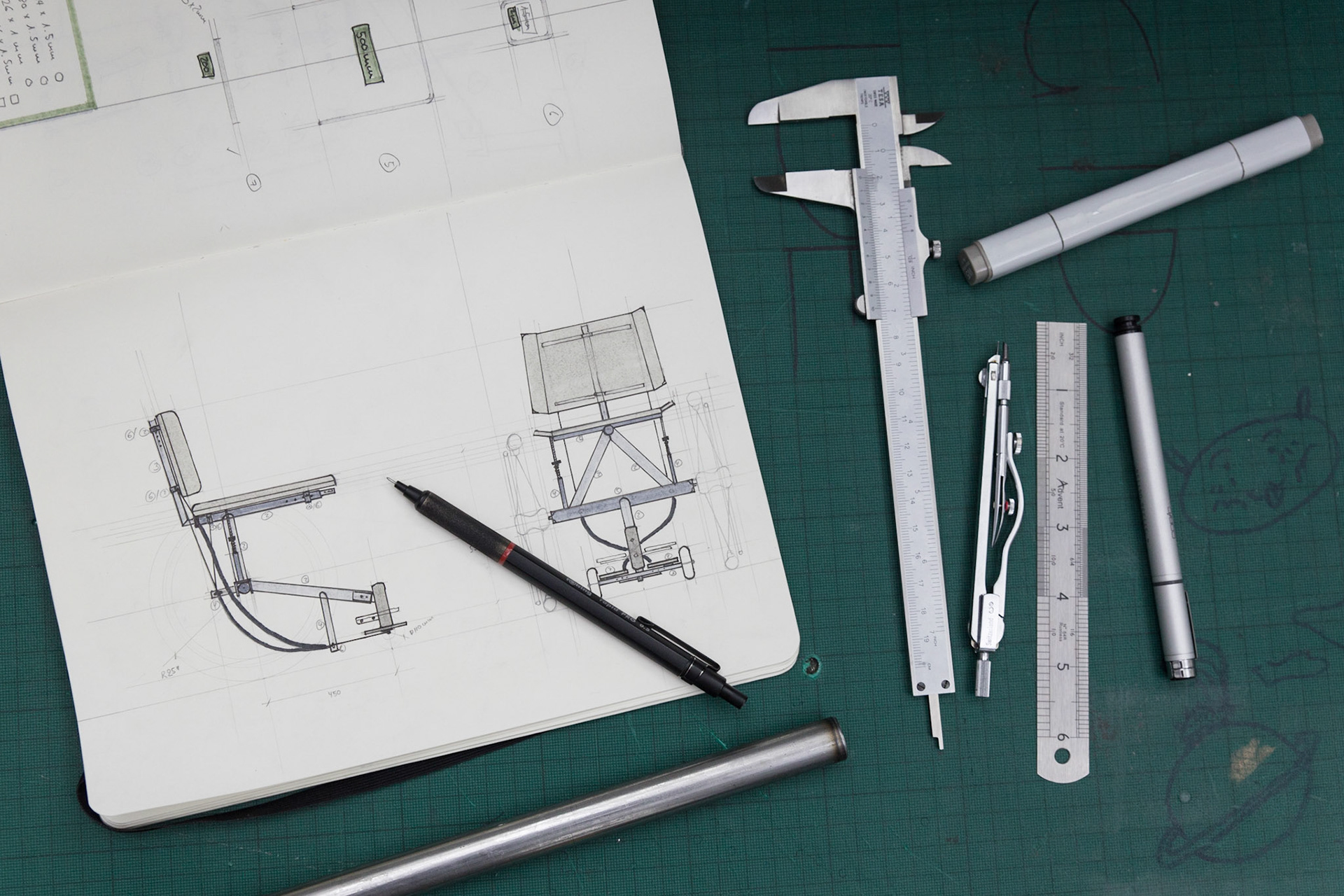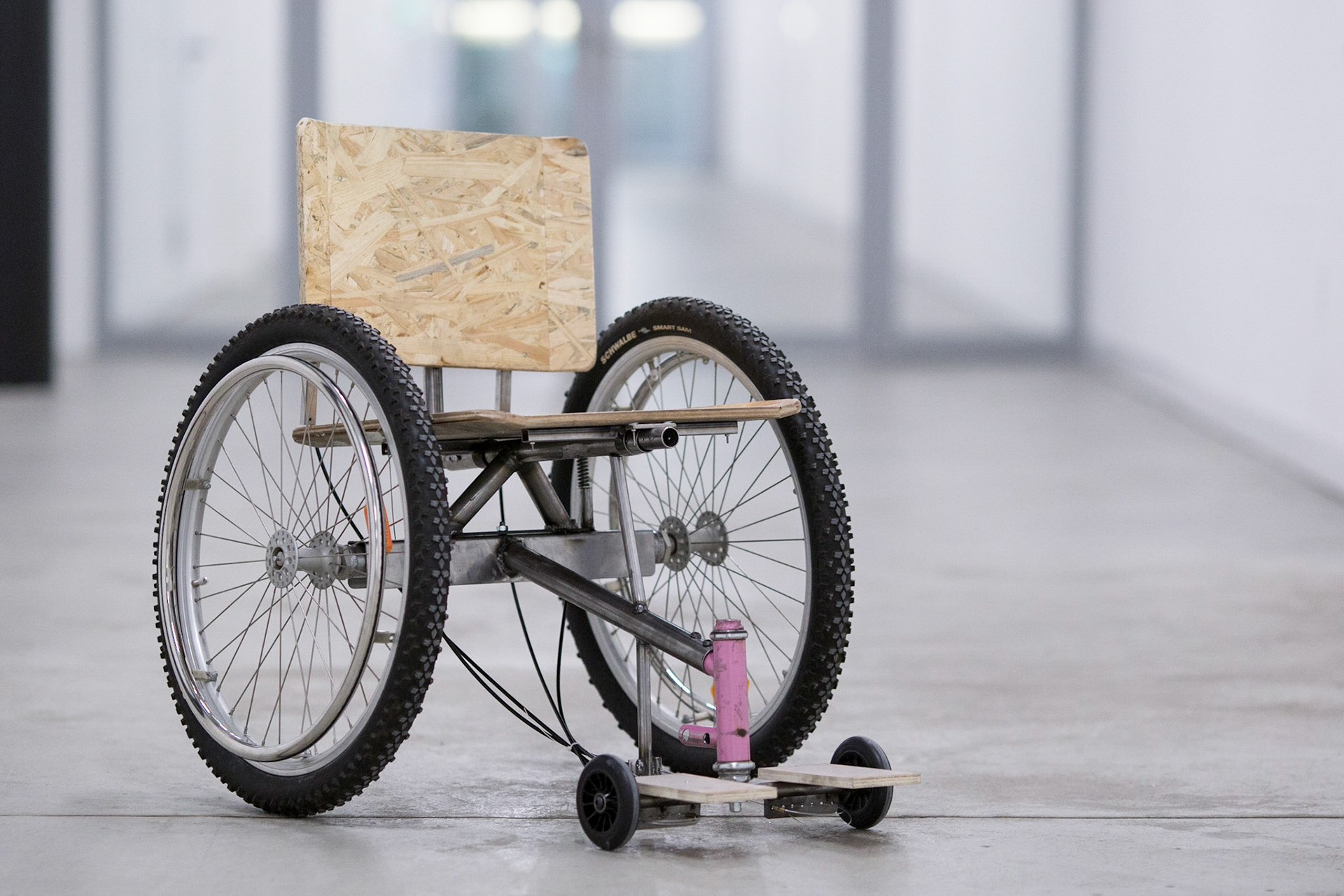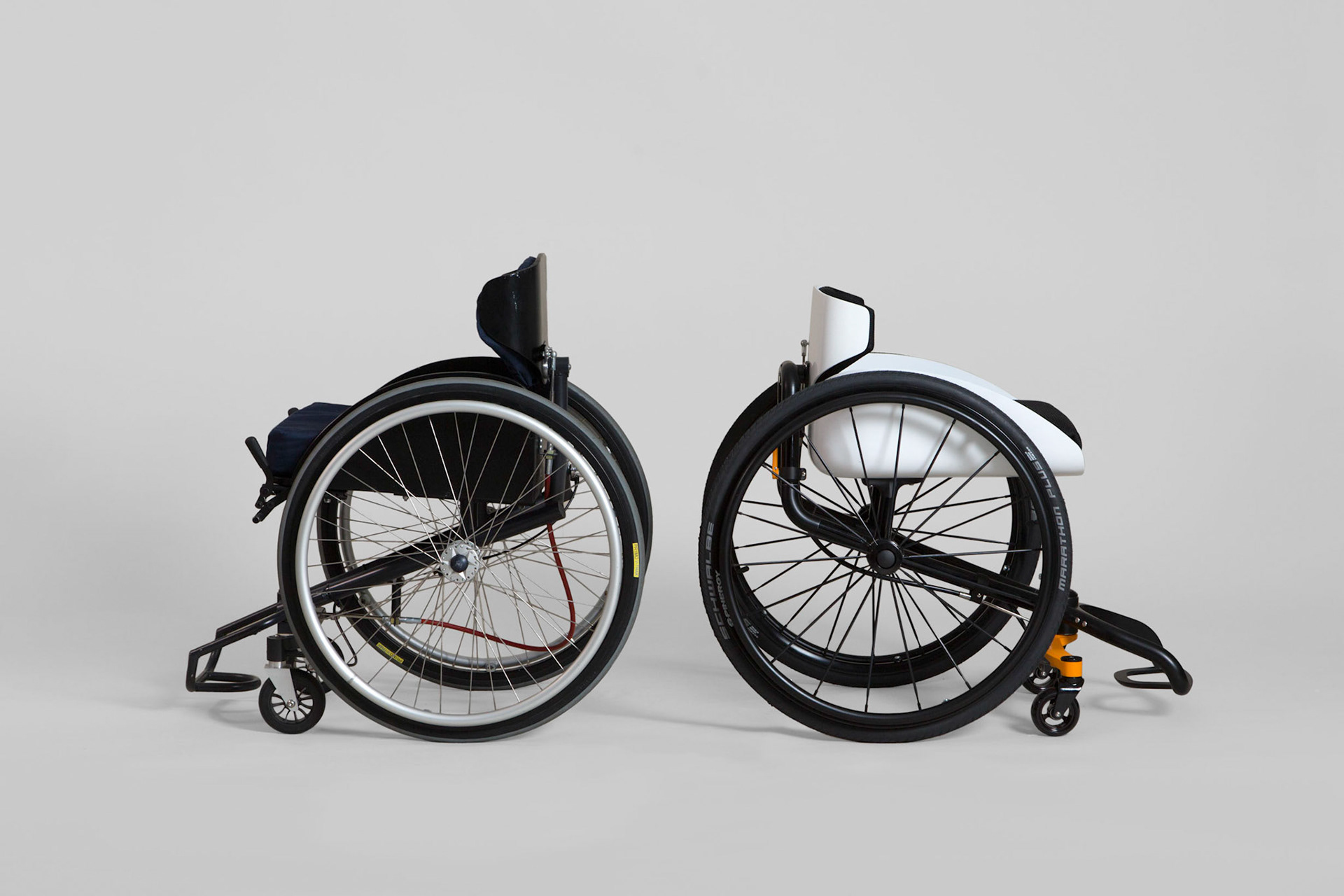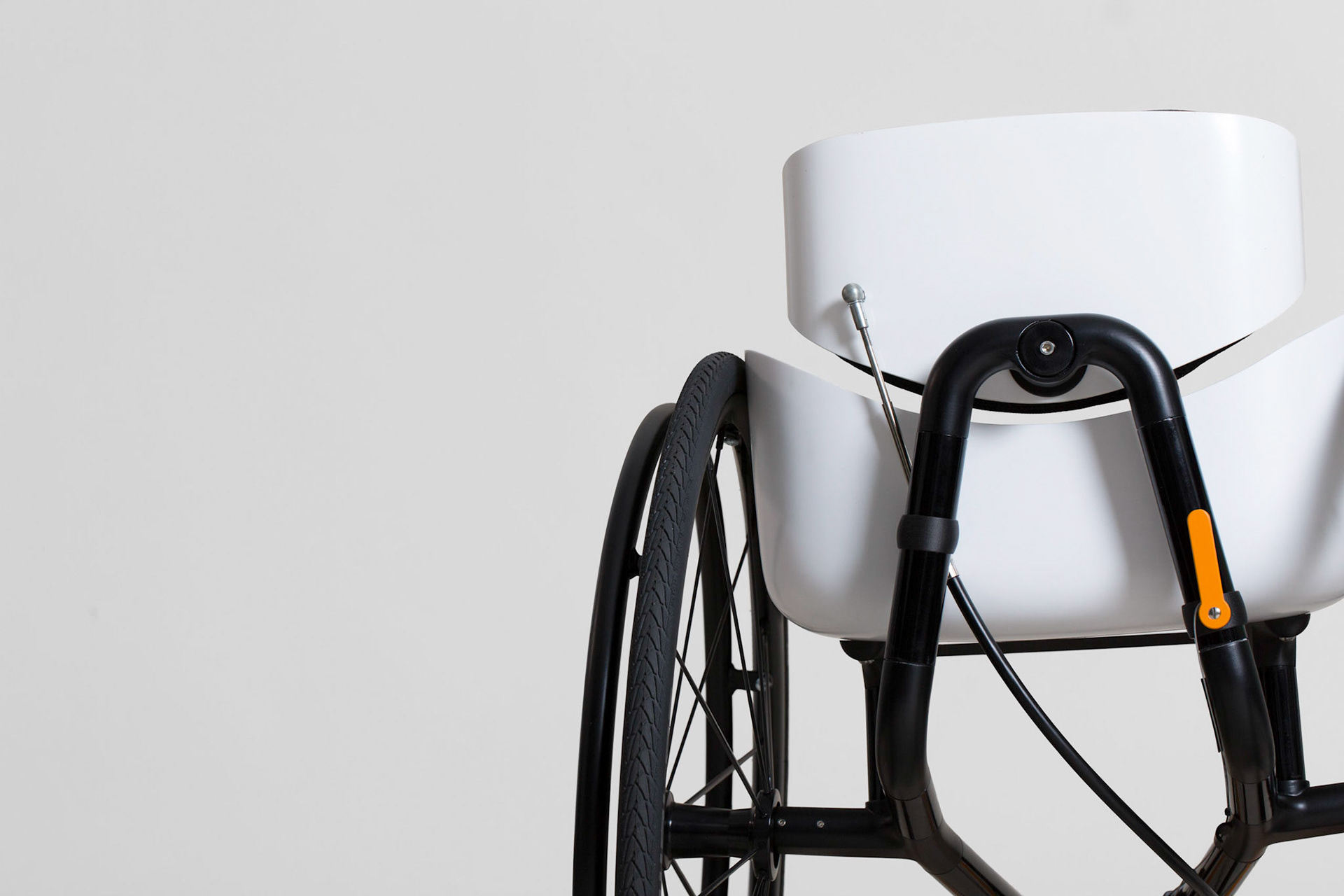Winner of the Snowdon Trust Award for Disabilty @ Helen Hamlyn Design Awards and Honourable Mention @ Global Grad Show Progress Prize
I'm thankful for the support I got on this project by a lot of individuals as well as by the Imperial College Advanced Hackspace and by Equipment for the Physically Challenged Ltd.
Read about The Reagiro in the press: On Reuters, on Vocativ, in The Engineer, on VICE, Hochparterre, Thiis, and many others.
User-Centered Innovation
The Reagiro is the result of a combination of a user-centered and an experimental design approach and has shown to provide values on different levels: Tilting sideways for steering is closely connected to fun, delight and a sense of freedom. Simultaneously, as it no longer matters where the kinetic energy comes from one can very easily move one-handedly leaving room for i.e. a cup of coffee, a smartphone or an umbrella.
On the medical side it has shown potential through stimulating core muscles and relieving the hands. A lot of the breaking efforts for changing or keeping direction are rendered obsolete which might prevent knock-on healthcare problems in the hands and the shoulders. These are hypothetical benefits at this stage that need to be explored in a clinical trial.
On the medical side it has shown potential through stimulating core muscles and relieving the hands. A lot of the breaking efforts for changing or keeping direction are rendered obsolete which might prevent knock-on healthcare problems in the hands and the shoulders. These are hypothetical benefits at this stage that need to be explored in a clinical trial.
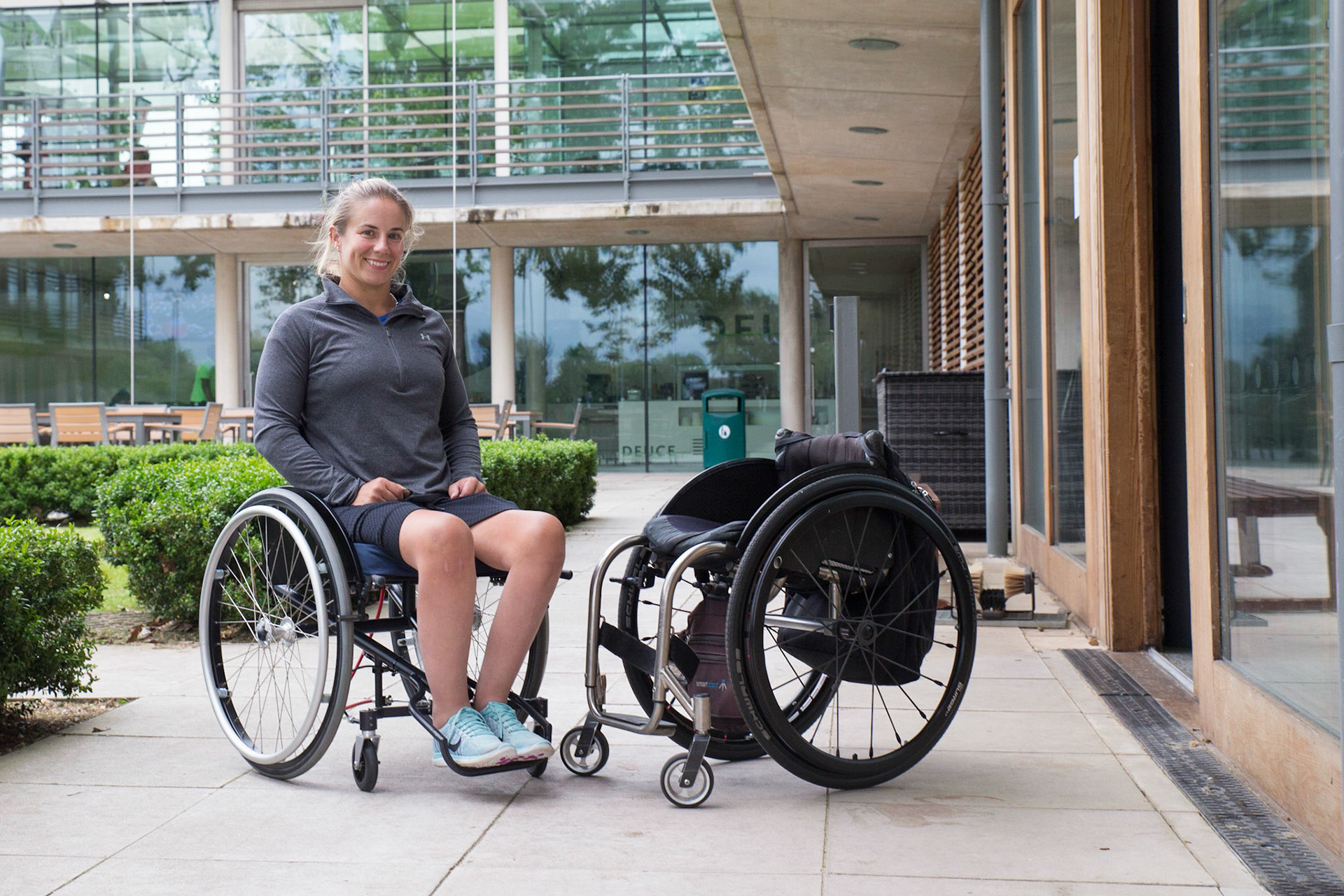
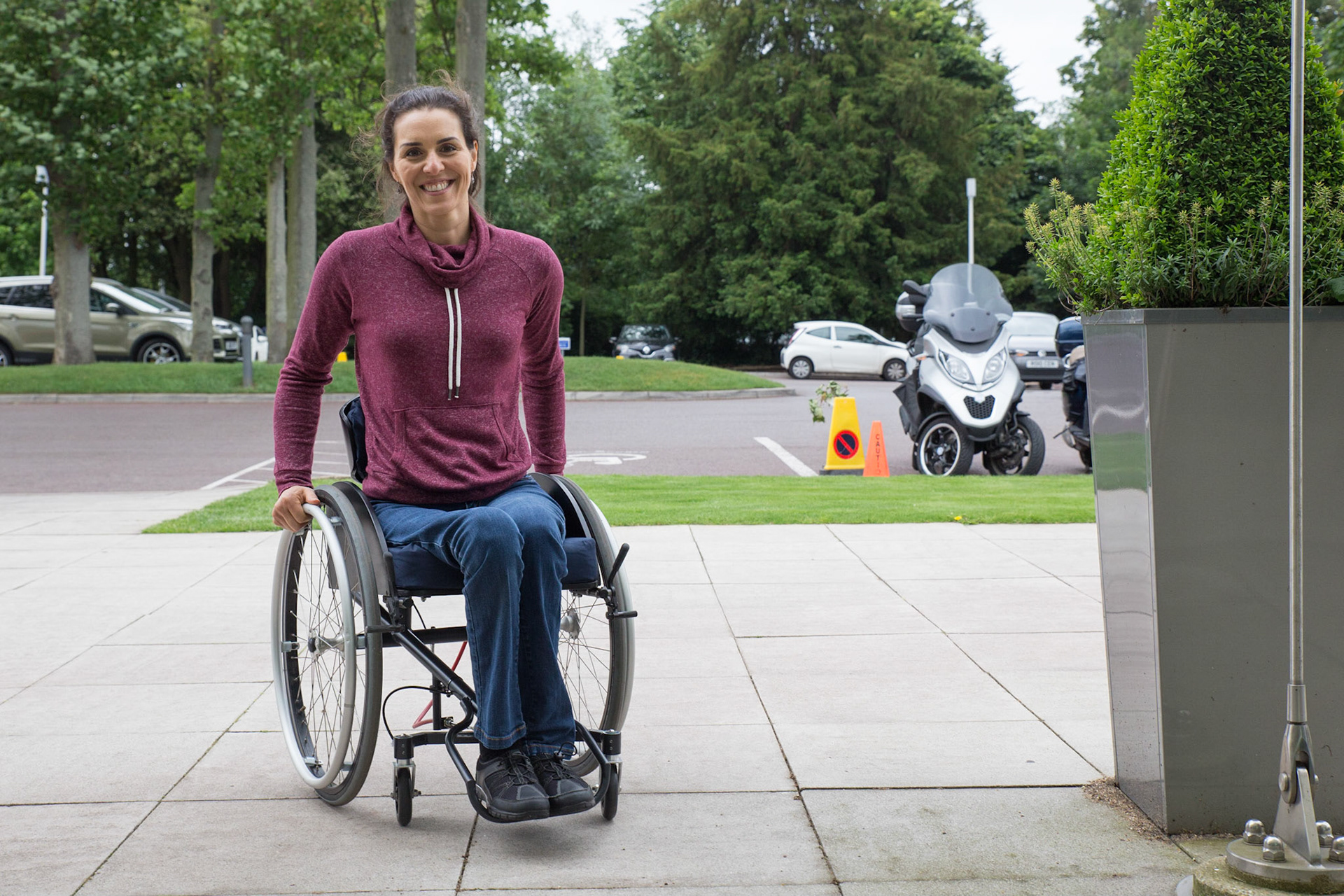
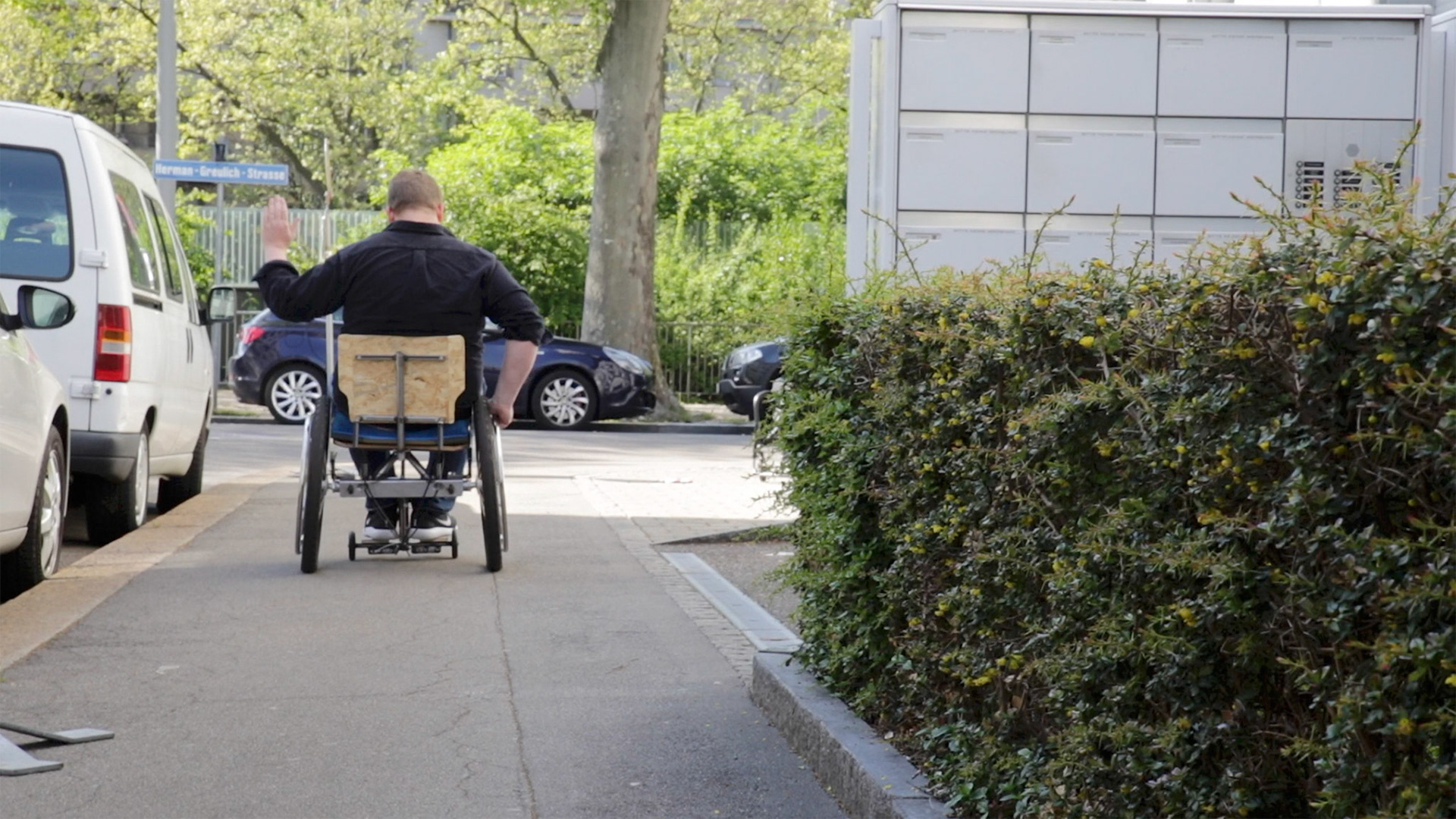
Refined Engineering and Desing
For customisation the frame uses a combination of digital and conventional manufacturing methods. Lugs that define the geometry are 3D-printed based off a parametric process to ensure each individual chair meets the exact requirements of the particular user.
The Reagiro draws inspiration from the bicycle industry and features dynamic and sporty aesthetics. The design expresses the novel way of moving it enables.
Prototyping
Extensive prototyping has formed The Reagiro. In it's development, a broad variety of prototyping methods were used reaching from Lego to minimal viable product development and from 3D printing to TIG–welding in order to build fully working prototypes.

